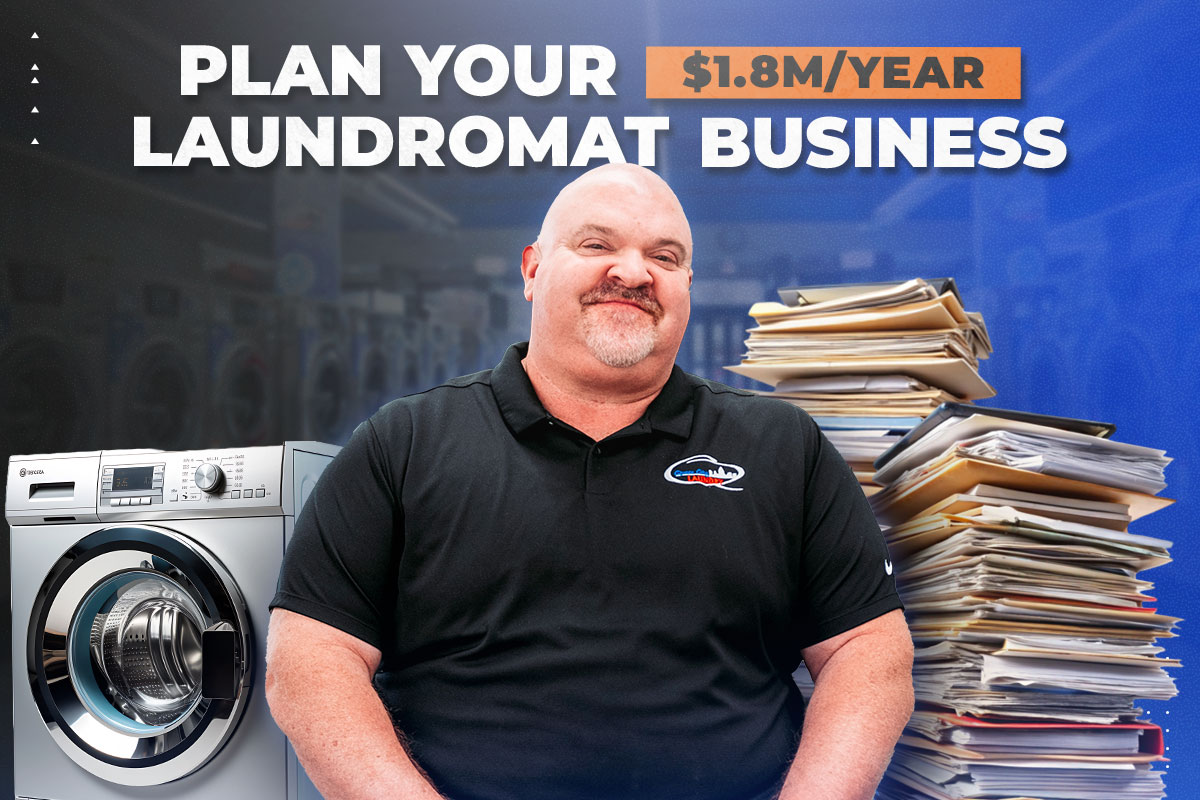According to Move.org, infant childcare costs between 10.6% and 26.3% of household income. It’s no wonder that many parents decide it’s more beneficial for a parent to stay at home than to go back to work and spend a large portion of their income to pay someone else to watch their own children. That’s why we’re going to show you how to start a daycare.
Kristy Bickmeyer started Twinkle Toes Nanny Agency when she struggled to find placement in daycare centers and nanny agencies required a $1K-2K placement fee just to provide a list of nannies. She created a network that provides nannies and families better in-home child care.
In less than 15 years, Twinkle Toes has grown to a franchise with more than $12 million in revenue and 20 locations across 5 states. We’ll share Kristy’s approach to the daycare business and how it’s revolutionized the daycare industry. Best of all, she’s done all this with word-of-mouth marketing.
We’ll discuss how to become a daycare business owner by providing you with information on the following subjects:
Let’s start by discussing the future of the daycare business. According to IBIS World, daycare businesses in the United States make $60.8 billion in revenue with a median profit margin of 9.3%. Business consistently grows with the birth of new babies which means it is virtually recession-proof. You can make even higher profits if you run a daycare like Kristy which is a nanny service. The median nanny service is approximately 51.7% profit because they provide at-home childcare. Kristy told us: Check out the rest of our interview with her below. Ultimately, your goal is to provide child care for parents. Whether you go to their home, they drop their kids off at your house, or you run a facility with multiple people, you’ll want to follow our 9-step process when starting a day care company: This step is mostly for those running a child care facility or preschool, but if you’re running a nanny business, the early childhood education credentials could be a differentiating factor. Some states may have certification requirements for daycare business operations, but it is always useful to have the following certifications. These are just a few of the many certifications that are available for daycare providers. By obtaining these certifications, you can demonstrate your commitment to providing quality care for children. Some of these may apply to other daycares like adult daycare and home health assistants. Childcare.gov states that a childcare business should meet these minimum requirements: Check out Childcare Aware for state-specific resources for early childhood education providers. Kristy told us: Requirements for nanny services are much easier to meet, but make sure you aren’t violating the laws. You’re taking care of other people’s children. It’s important they can trust you with their kids. In June of 2023, a Las Vegas resident’s husband was arrested for sex crimes. The resident was running an unlicensed in-home childcare center and intends to continue. Parent groups in the area have started an active campaign to prevent her from doing so. This story displays the importance of being cautious about who you hire in childcare providers. If your business gets caught in something like this, there is no recovery. Make sure to comply with all government regulations.
Should I Start a Daycare Business?

How to Start a Day Care Business
Step 1. Get Early Childhood Education (ECE) Credentials (Optional)
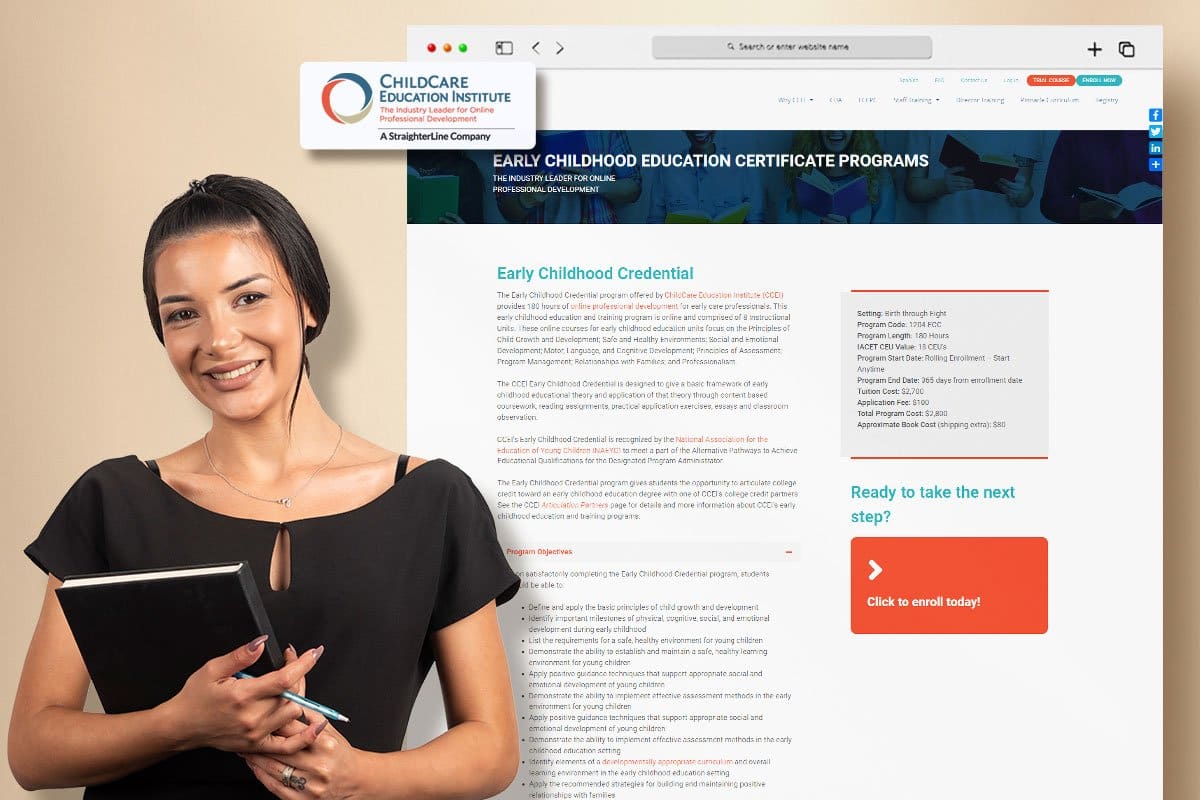
What Certifications Do I Need to Open a Daycare?
Step 2. Research Your Location’s Daycare Licensing Requirements

![]()
As Kristy said:
That’s why background checks are so important.
Keep reading to learn how to analyze the budding child care centers in your area.
Step 3. Perform Competitive Analysis of Daycare In Your Area
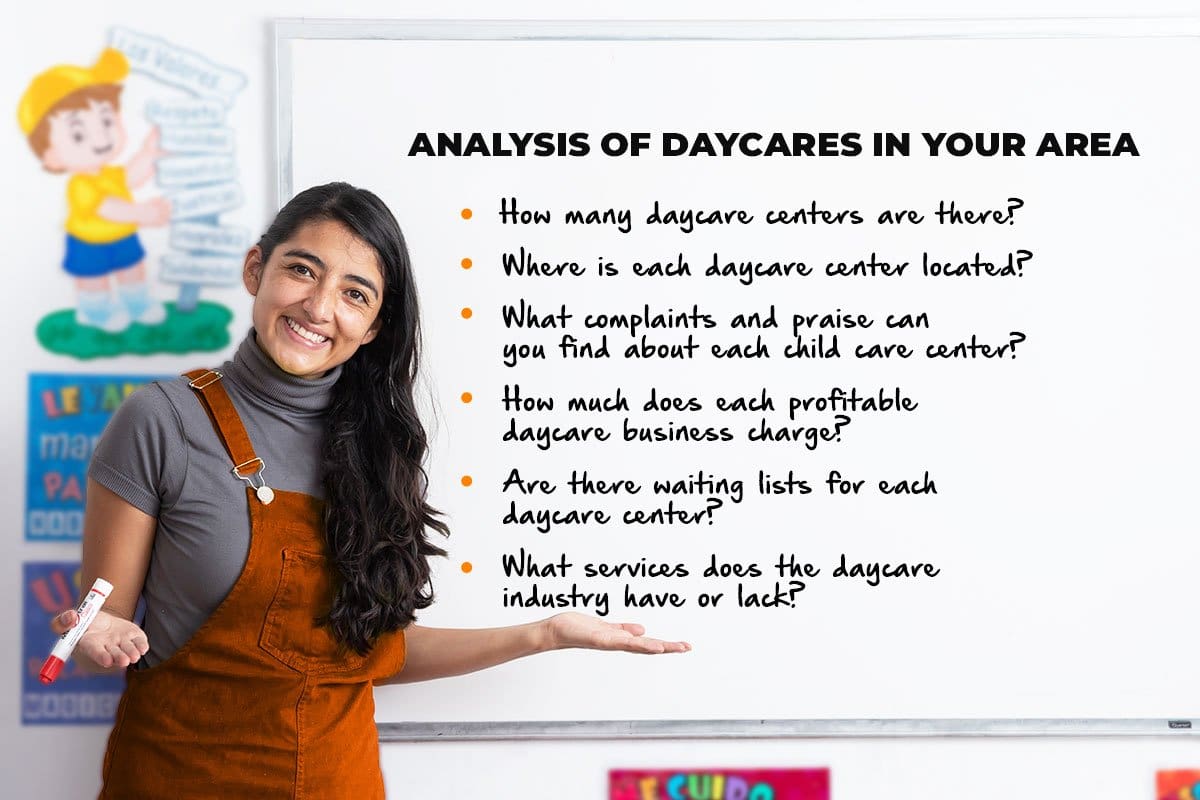
Research the daycare and nanny agencies in your location. You’ll want to know:
- How many daycare centers are there?
- Where is each daycare center located?
- What complaints and praise can you find about each child care center?
- How much does each profitable daycare business charge?
- Are there waiting lists for each daycare center?
- What services does the daycare industry have or lack?
This information will help you write your daycare business plans, which we’ll discuss next.
Step 4. Write a Day Care Business Plan
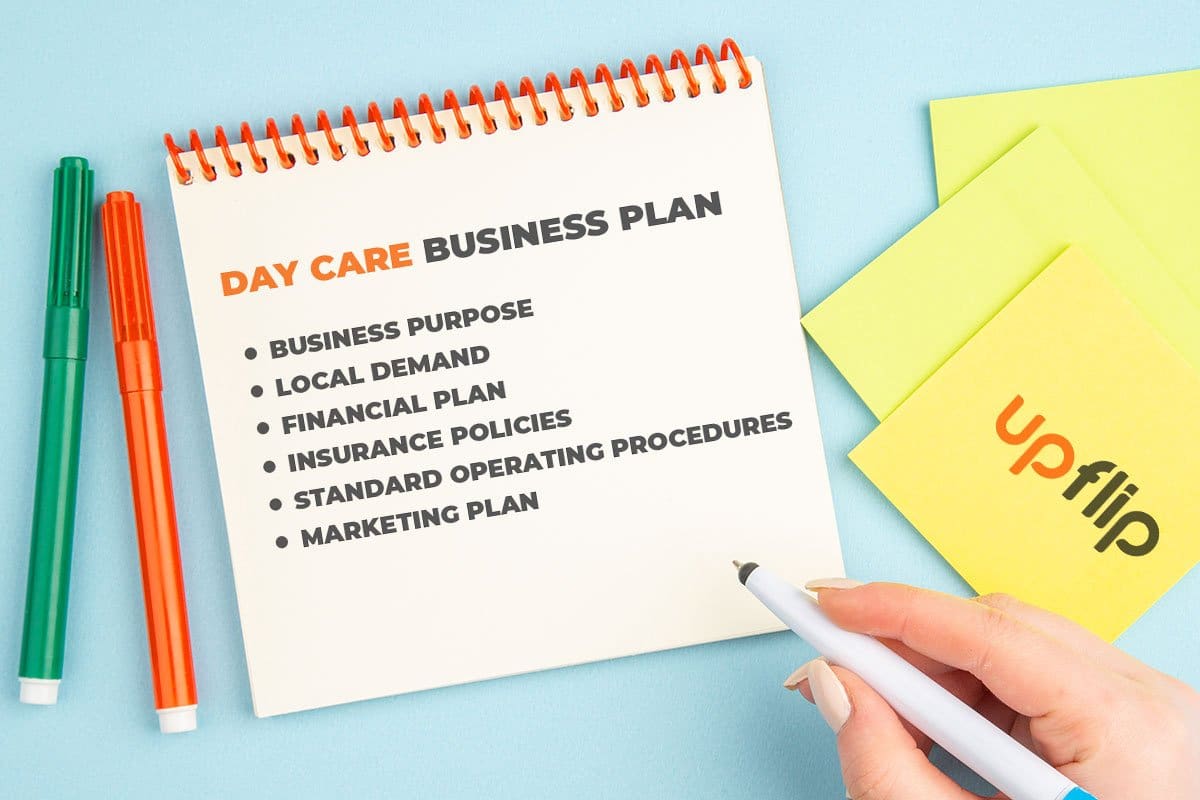
A business plan for a daycare service can be used to help you achieve your goals faster, get financing, and help employees make decisions based on the mission statement and values. Your business plan should include the following:
- Business Purpose: What makes your business different, how you’ll help customers, what your goals are. Make sure to include your mission and vision, too.
- Local Demand: Use the Census Bureau and your competitive analysis research to establish how many kids between 1-6 years old are in your area, how many need daycare, and how much they can pay.
- Financial Plan: A detailed budget of how much you’ll attempt to make and what you’ll spend it on. Be realistic. You should include both startup costs and ongoing expenses for up to 5 years.
- Insurance Policies: Day care facilities definitely need insurance. What happens if a kid is injured or dies?
- Standard Operating Procedures: Make sure to document rules and policies for everything you can think of. Make this a living document.
- Marketing Plan: Document exactly how you will market your daycare to find customers, nannies, and employees.
Kristy told us:
You’ll need $35K for the original franchise fee and an ongoing royalty of 3%. Learn more.
Keep reading for information on differentiating your own business from other local businesses when starting a daycare business.
Decide What Makes Your Daycare Business Unique
Your unique selling point for a daycare could be any number of differentiating factors. It might be the cleanliness of your facility, pricing, education, or in Kristy’s case:
Prepare a Budget
You can prepare a budget for your daycare startup and ongoing costs using the following percentages. Make sure to stay within your state limits for clients per caregiver.
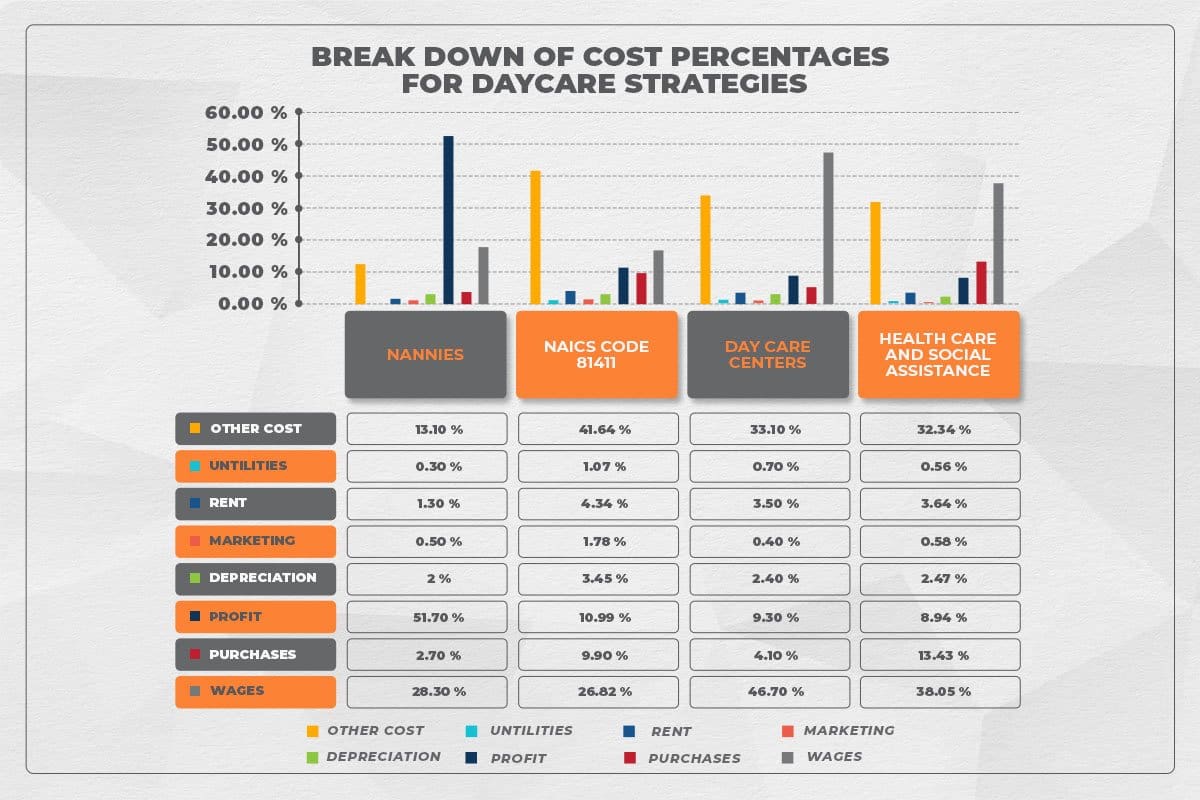
Managing business finances by the numbers is the best way to build financial freedom over the long run.
Next, we’ll discuss the financial assistance available to families and small businesses opening a daycare center.
Step 5. Research Childcare Tax Credits
The federal government and some states offer tax credits to help people pay for child care. You can find information on the child and dependent care credit by going to IRS Topic 602.
Basically, it allows credits of up to $3,000 for one child or $6,000 for more than one child under 13 years old. If the child qualifies, they can claim between 20% and 35% of their income. The percentage claimable decreases as income rises.
A daycare owner should understand these tax credits to help people navigate them. The tax credits also impact how much people can realistically afford to spend. If you open a daycare for after-school care, you might want to charge the amounts in the table below.
| Time Period | Amount to Qualify Assuming 180 Day School Year |
| Daily | $16.66/kid |
| Weekly | $83.33/kid |
| Monthly | $500/kid |
| School Year | $3,000/kid |
Don’t forget to see if your state has any tax credits. I found the Keeper Tax write-off guide useful for common tax deductions during tax season.
Next, let’s discuss some unique opportunities a business owner has when starting a daycare.
Step 6. Pursue Early Childhood Education Grants and Funding

There are numerous grants and funding opportunities when opening a daycare or other childcare location. Utilize as many as possible to improve your own daycare business and help children develop during their early years.
Check out daycare center grants available at some of the following locations:
- Childcare Lounge: Site for finding grants for childcare facilities.
- Health and Human Services: Government department that provides aid for families and business expenses.
- Family Services: Offers assistance to families. A childcare center can accept funds directly from the agency, too. These are run by local agencies.
Next, we’ll discuss the importance of creating a daycare business contract before opening a daycare.
Step 7. Create a Childcare Contract
Your childcare contract is the basis for the services and payments exchanged between your daycare business and your customers. You’ll want to include the following sections:
- Parties: The names of the day care provider and the parents
- The Children: How many kids, names, and birth dates
- Duration: The beginning date, length of contract, and end date
- Child Care Services: What services will and will not be covered
- Schedule: Days of the week and times the daycare will watch the children
- Holidays: Any provisions for how holidays are handled
- Payment Amount: How much you’ll charge per period of time
- Payment Method: How often the parent needs to pay
- Deposit: Any charge for a security deposit
- Absences: How to handle absences
- Vacation Times: How to handle vacation periods
- Damages: How to handle damages
- Governing Law: The state the contract law is based on
- Severability: This is a standard contract term that makes it where one clause does not render the full contract useless
- Additional Terms & Conditions: Place to add additional terms
- Entire Agreement: Clause stating that the daycare contract is the primary contract and can only be superseded by contracts signed by both parties after the original contract
You should always consult with a licensed attorney to verify your contract is enforceable, but download our childcare contract template to get started.
In-home daycares should modify the contract because it is written for a daycare center where parents drop off their kids.
Next, we’ll discuss the importance of marketing when opening a daycare.
Step 8. Market Your Child Care Business
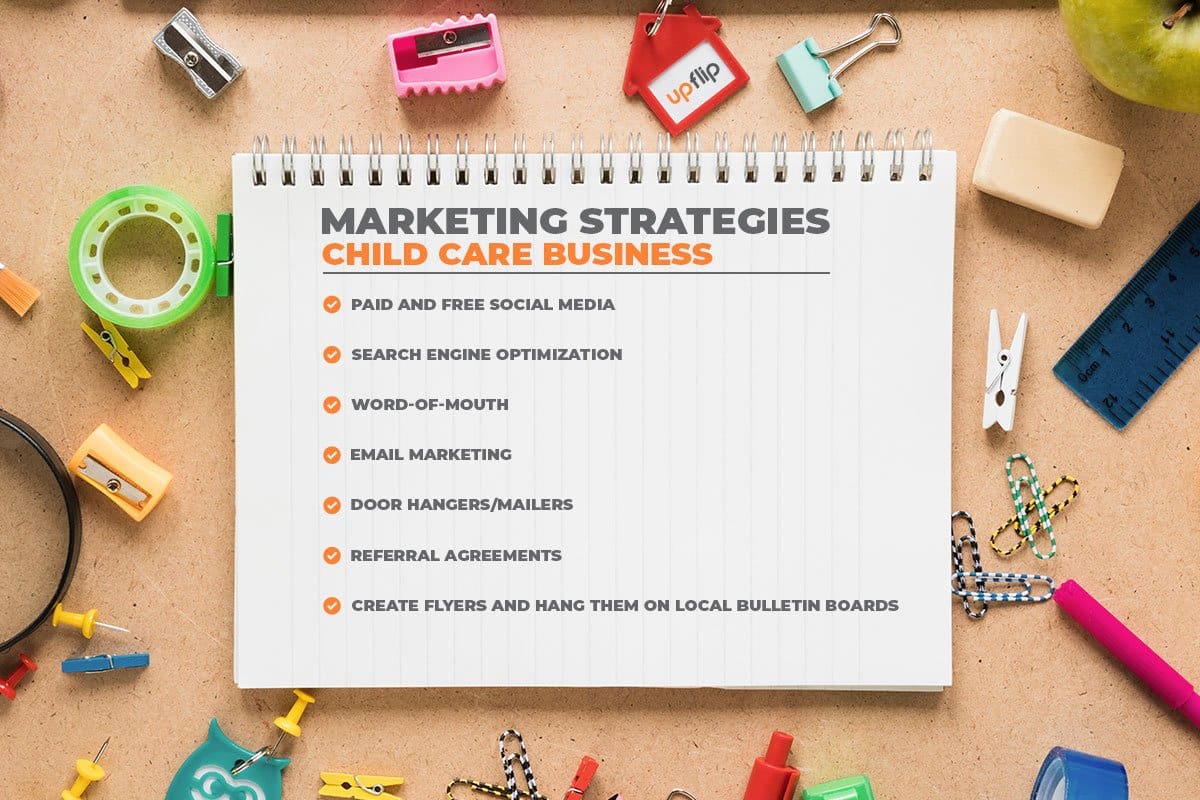
Marketing your daycare opening is crucial to help get customers to your business. Most daycares use a combination of several different marketing strategies including:
- Paid and free social media
- Search engine optimization
- Word-of-mouth
- Email marketing
- Door hangers/mailers
- Referral agreements
- Create flyers and hang them on local bulletin boards
Keep reading for more advice on how to open a daycare.
Advice on Word-of-Mouth Marketing
Kristy told us:
Next, we’ll talk about how relationships with a child care center can be highly beneficial for in-home daycare providers.
Referral Agreements

One of the unique strategies that Kristy uses is trading referrals with childcare centers in her area. When there is a waiting list, the day care centers will refer their clients to her and Kristy’s company will provide nannies until the daycare center can admit the kids. She also explained:
Whether you run a home daycare or provide childcare in home, you can benefit by providing great customer service. Find out how. Kristy explained that customer service is the primary driver of a successful daycare center. I have seen daycares that just offer a discount and don’t show they care. I don’t want to be that kind of small business owner. There are different types of day cares you can start including: Dog day cares focus on providing a place for a dog to go play while the person is at work or on vacation. These care facilities are less profitable and consistent than other small businesses, but pet owners love their animals and are willing to pay a premium for good care. At-home daycare is when you host day care services in your home. This is perfect for people with their own kids. You can make money and watch other people’s kids in your home. You’ll have fewer kids in an at-home daycare and you probably won’t have employees. There will be special rules you’ll have to follow if you choose to start a small business this way, but your business will pay part of your housing payment. Most parents would actually prefer for the more personalized care, but kids can get possessive of the stuffed animals. In-home child care businesses, or nannies, go to people’s homes and watch their kids exclusively. Kristy described the difference between a nanny agency and the way Twinkle Toes works. Effectively Kristy started a home daycare that is part daycare, part nanny service. An adult day care helps adults that can’t care for themselves. This may mean taking care of people with disabilities or health problems. You’ll probably need special licensing based on the type of patients you’ll be helping. Providing adequate care is a big business, but you’ll want to make sure you follow all the laws, like the Americans with Disabilities Act and any other laws governing elderly care. Special needs day care facilities are specifically focused on helping kids or adults with mental, physical, or health issues. The care will normally be focused on a specific category of problems like Alzheimer’s patients or kids with Down’s syndrome. Because each health issue requires different care, you’ll need to research requirements for caring for their specific challenges. Day Care centers have specific rules that have to be followed about: Start by researching your location’s laws about day care centers, and then follow the rest of this guide. In-home preschools are much like day care centers but have an added emphasis on learning. Education facilities will normally have additional accreditation processes like those from NECPA. Make sure to check with your school board to see what accreditations they require. A daycare is not the least expensive business to start, but it can be a rewarding career with lots of potential clients. You’ll also have plenty of professional development work as you start your own business It may be beneficial to understand the financial commitment you’ll make when starting a daycare. The cost to start a daycare business is between $10K and $100K, but most can start daycares for under $50K. Overall, at-home daycares normally require lower start-up costs because there are no costs associated with buying or renting a space. The operating costs of running a daycare center include: Let’s look at the typical costs associated with daycare businesses. Most commercial spaces charge between $0.60 and $2.50 per square foot. Plus, you’ll need to pay expenses like electricity, water, heating, TV, phone, and internet. Home-based daycare centers won’t have these costs, but you’ll still be able to deduct the expenses if you run an in-home daycare. If you go to other people’s homes, you’ll have costs of transportation. The Bureau of Labor Statistics estimates childcare workers in the U.S. earn between $21K and $40K per year. The employee salaries will vary based on education, location, certifications, and years of experience. You can find detailed statistics about day care positions and their hourly pay on Payscale.com. Every state has different daycare business licensing fees and requirements. Contact your state’s early childhood education department for more information. The licensing process can be quite challenging. We’ve provided a picture of Nevada’s process as an example. Don’t be surprised if you are spending $10K+ and 6 months to complete everything. Insurance normally costs $3K to $5K annually and varies based on location, credit, and state laws. Kristy told us: You may have to buy the following insurance policies: Go to Simply Business to find the best quotes for childcare businesses. You will need furniture and equipment at your daycare. Indoor furniture can cost between $30K and $40K. You might need: You might also want toys, books, craft supplies, cleaning supplies, diapers, and wipes. You’ll also need to calculate the cost of food and kitchen utensils if you provide meals. Most daycares follow USDA Child and Adult Care Food Program nutrition standards. Expect to spend between $1K and $1.5K monthly on advertising. This includes expenses such as printed flyers, marketing materials, website costs, and social media ads. If you are social, you might be able to get by without it. Kristy’s main marketing expense is sweat equity, or spending time instead of money to get the word out. She told us: Take a look at some of the industry organizations in child care and nanny services. At this point, we’ve shown you how to start a daycare center. We’ve also provided all the resources you’ll need to help you open a successful day care. Which type of daycare business sounds best to you?Step 9. Provide Great Customer Service
Day Care Business Ideas

How to Start a Dog Day Care Business
Have Your Own Children? Consider How to Start an At-Home Daycare

How to Start an In-Home Child Care Business
How to Start an Adult Day Care

How to Start a Special Needs Day Care
How to Start a Day Care Center
How to Start an In-Home Preschool

How much does it cost to start a daycare?
Rent and Utilities
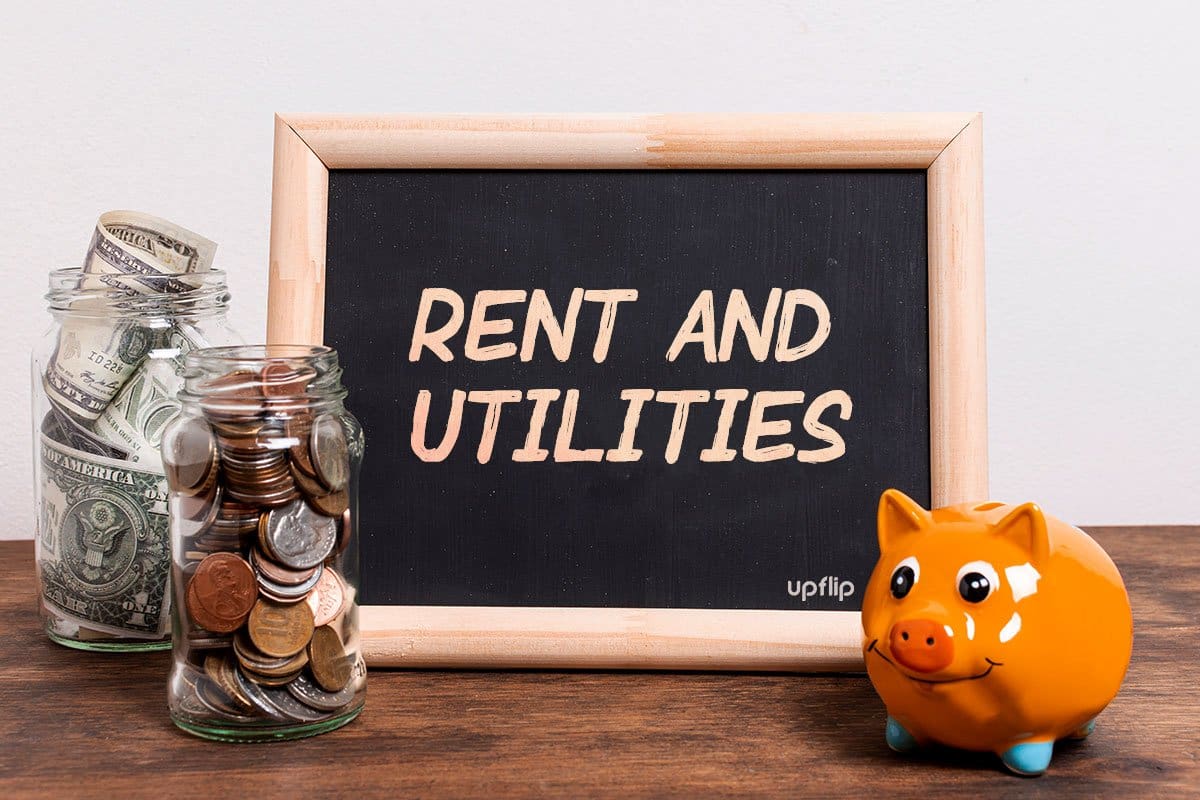
Employee Compensation
Licensing Fees
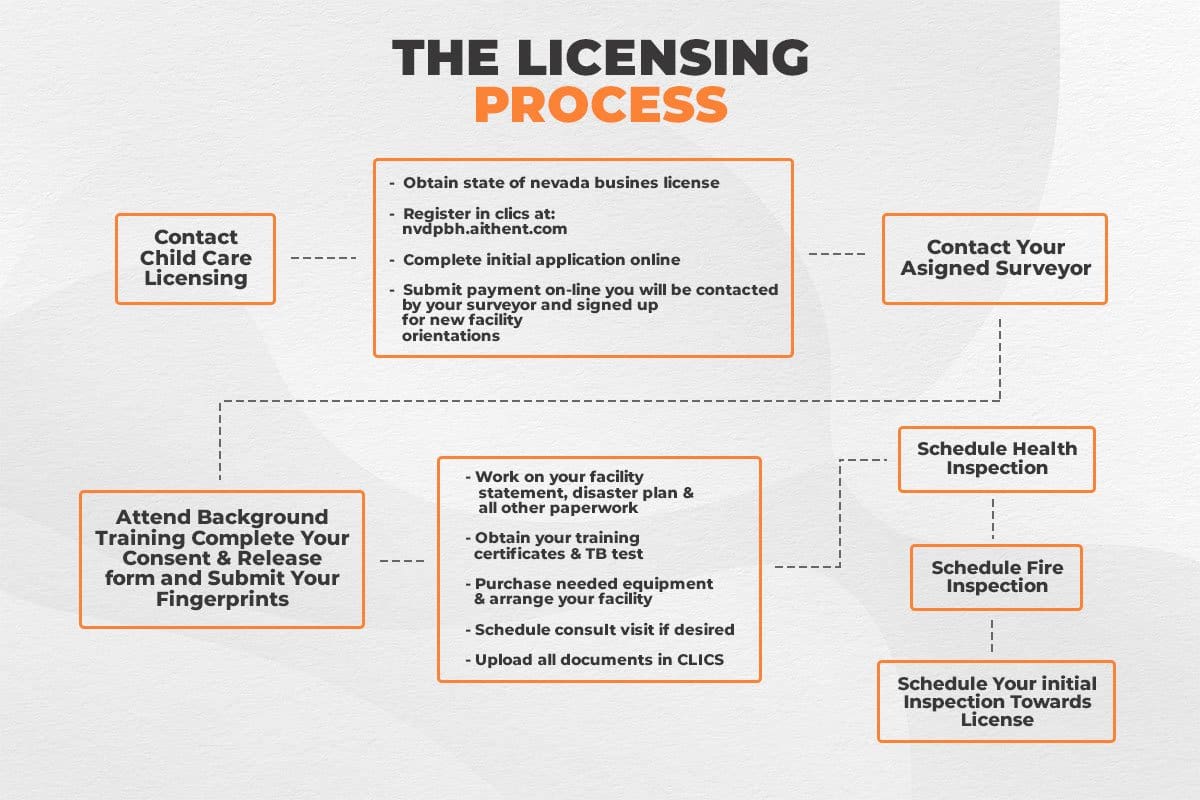
Insurance
Supplies and Equipment

Food
Advertising and Marketing

Resources for Daycare Owners
Ready to Start Your Own Daycare?




